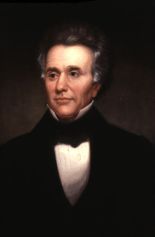Reuben Walworth | |
|---|---|
 | |
| Chancellor of New York | |
| In office April 28, 1828 – July 5, 1847 | |
| Governor | Nathaniel Pitcher Martin Van Buren Enos Throop William Marcy William Seward William Bouck Silas Wright John Young |
| Preceded by | Samuel Jones |
| Succeeded by | Position abolished |
| Member of the U.S. House of Representatives from New York's 12th district | |
| In office March 4, 1821 – March 3, 1823 | |
| Preceded by | Ezra C. Gross |
| Succeeded by | Lewis Eaton |
| Personal details | |
| Born | October 26, 1788 Bozrah, Connecticut, U.S. |
| Died | November 27, 1867 (aged 79) Saratoga Springs, New York, U.S. |
| Political party | Democratic-Republican (Before 1828) Democratic (1828–1867) |
| Spouse | Maria Avery (Deceased 1848) Sarah Ellen (Smith) Hardin (his death) |
| Children | Clarence A. Walworth (1820–1900), Mansfield Tracy Walworth (1830–1873) and 4 daughters |
| Signature | |

Reuben Hyde Walworth (October 26, 1788 – November 27, 1867) was an American lawyer, jurist and politician. Although nominated three times to the United States Supreme Court by President John Tyler in 1844, the U.S. Senate never attempted a confirmation vote. Known for his simplification of equity law in the United States, Walworth served as a chancery judge in New York for more than three decades, including nearly two decades as Chancellor of New York (1828 to 1847) before a new state constitution abolished that highest statewide judicial office. Walworth also ran unsuccessfully for Governor of New York in 1848, and received a commission from the U.S. Supreme Court in 1850 concerning the Wheeling Suspension Bridge.[1]
- ^ Appleton's Cyclopedia, Vol. VI, p. 345